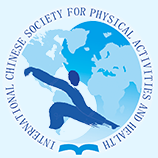Document Type
Abstract
Publication Date
2-2024
Abstract
Purpose: High-fat diets cause obesity and disease leading to excess appetite and cardiovascular disease. At present, there is literature showing the improvement effect of exercise on obesity and related diseases. To explore more deeply the mechanism of action of exercise on appetite improvement and heart function in high-fat diets, we used fruit fly motility models to reveal this aspect of function. Methods: A total of 300 wild-type W1118 virgin flies that matured within 12 hours were collected. They were randomly divided into 100 animals in the normal diet control group (NFD), 100 in the high-fat diet group (HFD), and 100 in the high-fat diet exercise group (HFD+E). Exercise intervention for 7-day-old fruit flies for 5 consecutive days. An EM-CCD high-speed camera was used to record the heartbeat of fruit flies (video at 130 fps, the 30 s), and HC Image software was used to record the cardiogram data. Semi-Automated Optical Heartbeat Analysis (SOHA) quantifies Heart Rate (HR), Heart Period (HP), Diastolic Intervals (DI), Systolic Intervals (SI), Arrhythmia Index (AI), Diastolic Diameter (DD), Systolic Diameter (SD), Fractional Shortening (FS), and Fibrillations (FL). Fruit fly uptake was measured using the FlyPAD high-throughput Drosophila quantitative feeding system. All fruit flies needed to be fed on normal medium for 5 days first and then transferred to fresh normal medium or the high-fat medium on the 6th day for another 2 days. NFD flies are placed in a constant temperature and humidity incubator (25 ℃, 50% humidity, 12 h day and night cycle), HFD flies are housed in incubators at 22-24 ℃ and 50% relative humidity to make high-fat medium by mixing 30% coconut oil and 70% standard medium. Results: The HFD group had an increase in AI, HR and HP, constant SD, decreased DD, and decreased FS. After exercise, HFD+E group had a decrease in HR, an increase in HP, an improvement in AI, an improvement in DD, and no change in SD. The food intake and sipping frequency of fruit flies in the HFD group were significantly higher than those in the NFD group, and during the same time period, the food intake and number of sipping times in the HFD+E group and the HFD group decreased significantly after exercise. Conclusion: Exercise improved excess appetite and cardiac dysfunction in high-fat diets.
DOI
https://doi.org/10.18122/ijpah.3.1.16.boisestate
Recommended Citation
Yan, Hanhui; Ding, Meng; Xu, Ping; Peng, Tianhang; Zhang, Ping; Tian, Rui; and Zheng, Lan
(2024)
"A63: Exercise Improves Appetite and Heart Function in High Fat Drosophila,"
International Journal of Physical Activity and Health: Vol. 3:
Iss.
1, Article 16.
DOI: https://doi.org/10.18122/ijpah.3.1.16.boisestate
Available at:
https://scholarworks.boisestate.edu/ijpah/vol3/iss1/16
Included in
Exercise Science Commons, Health and Physical Education Commons, Public Health Commons, Sports Studies Commons



